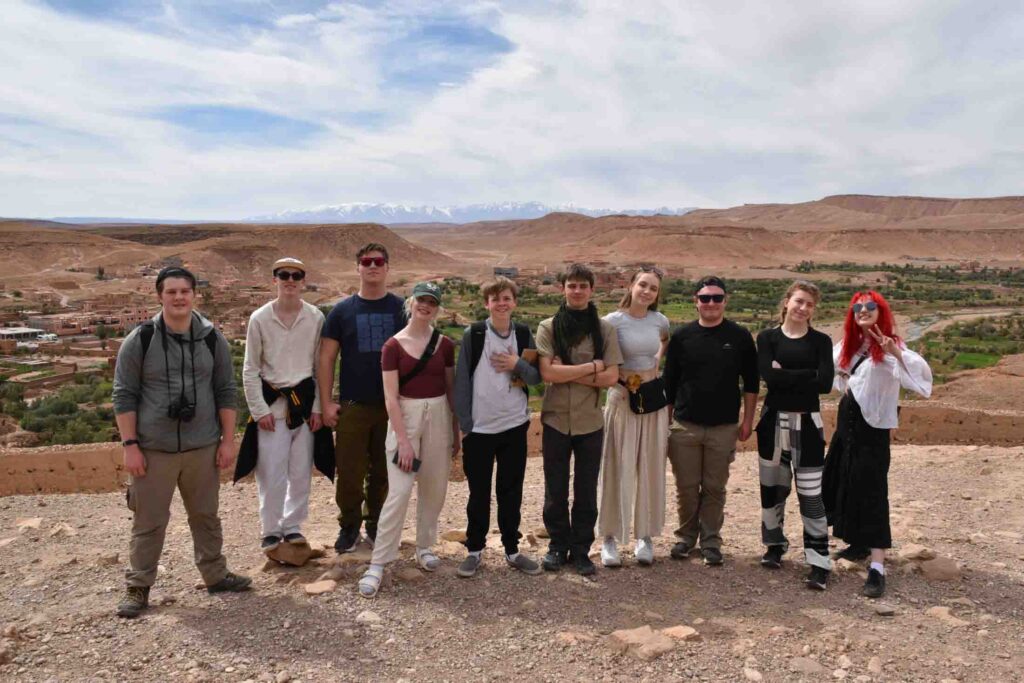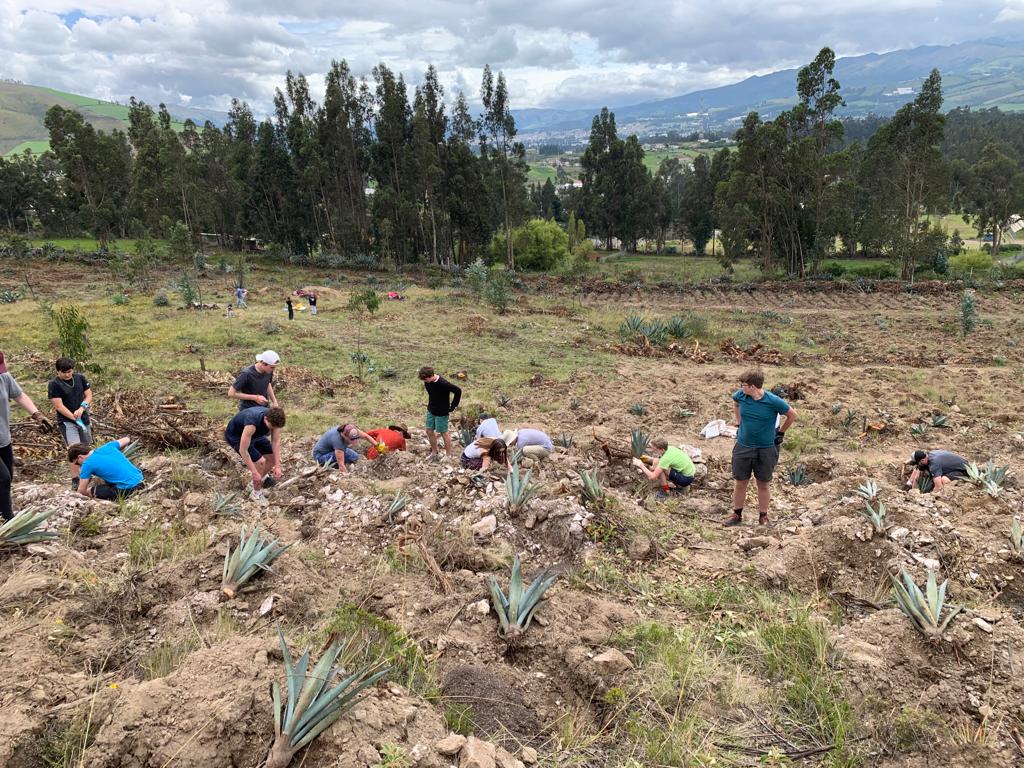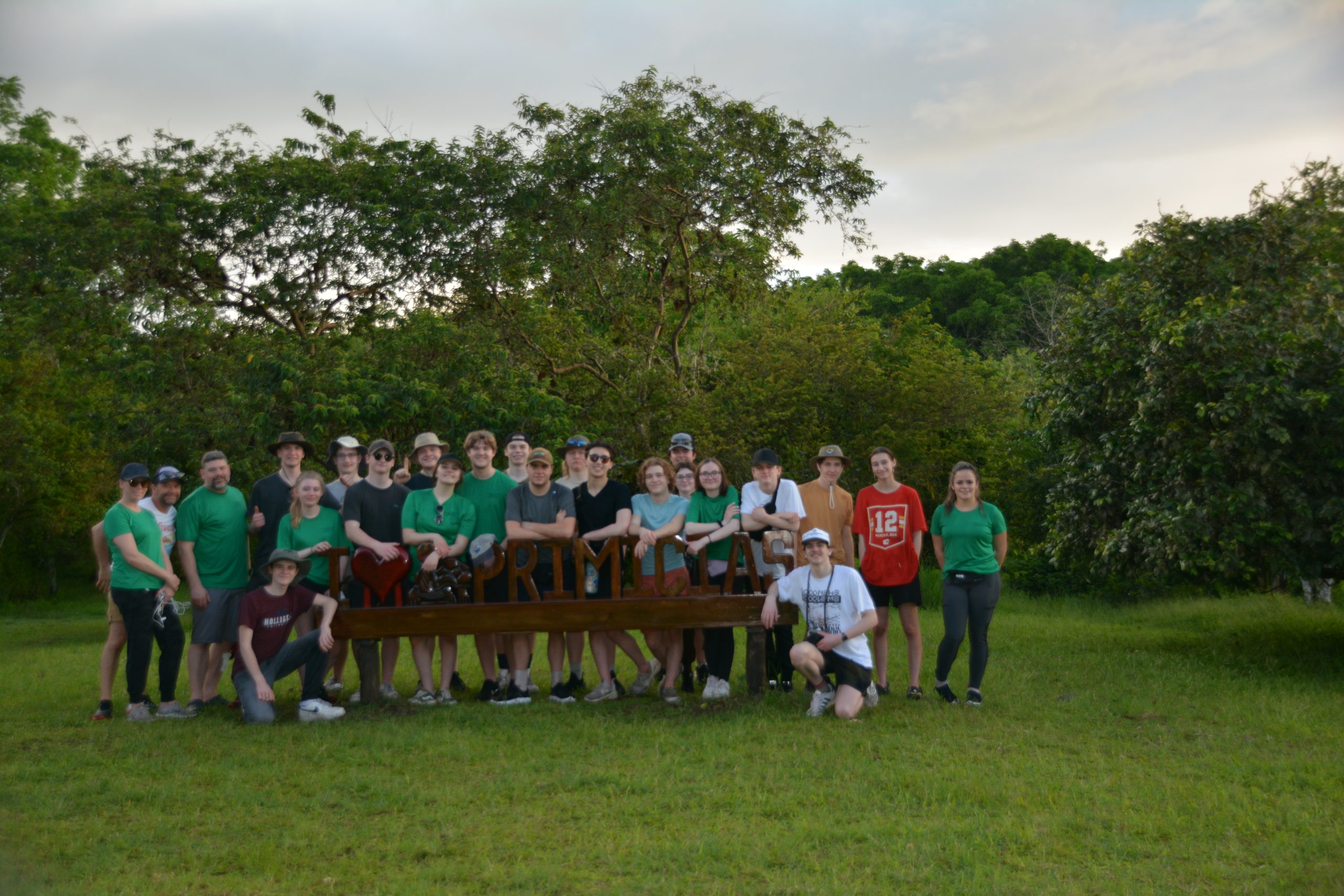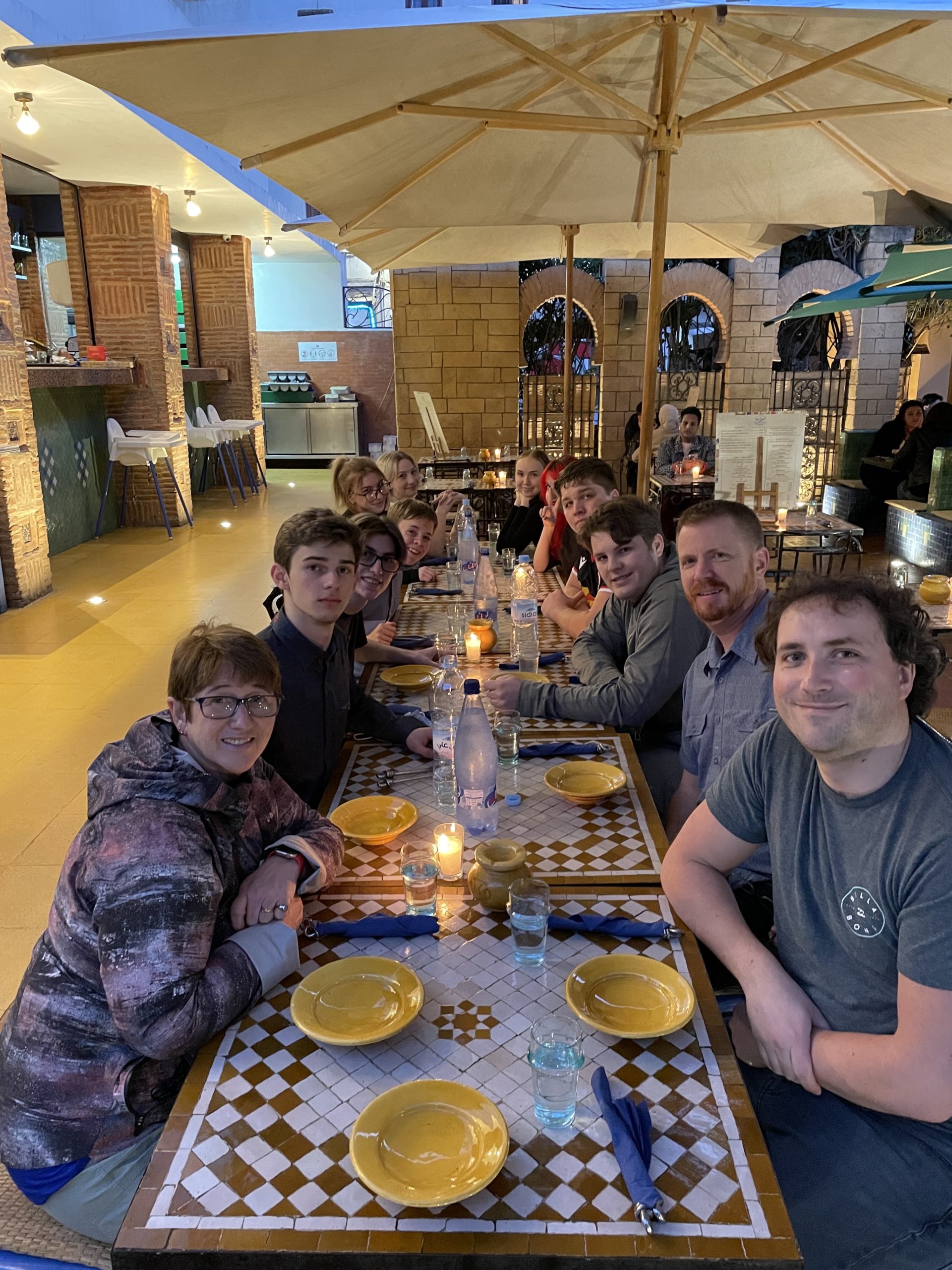Over spring break this year, three groups of Calgary Academy students and teachers traveled around the world to make an international impact. One group arrived at a rural school outside of Cayambe, Ecuador. Built into the side of the mountain, water and mud often flooded the school building during rainy season. The CA students worked together to dig a ditch that would channel the water and mud away from the building. It was challenging work, but “every day, [the students] did way more than what was expected to them,” says Kathy Pfeifer, teacher, and head of the International Travel Studies program. “They kept asking to do more.”
International Travel Studies (ITS) trips seem to have that effect on students: bringing out their very best, sparking compassion, and fostering generous teamwork without question. Two other ITS groups were also helping global village schools during Spring Break — a second group in Cayambe, Ecuador, and the third in the Agafay desert in Morocco. A total of 44 high school students and 11 teachers participated in the program this year. ITS has been a unique opportunity for growth at Calgary Academy for 17 years now.
In 2005, CA teacher, Kelly Beaton, had an idea for an altruism-based travel program for CA students. “It wasn’t just a holiday,” she reflects. The program would be geared towards teaching students what means to be a global citizen. It would ask them to contribute to their school community, their greater local community, and the global community.
Kelly set out to create a year-long experience. Before the trip, the group would meet once a week to learn about the history, culture, and language of the country they are visiting. They would also look around the Calgary community for local volunteer opportunities (CA students have participated in the AIDS Walk, volunteered at the Salvation Army and at local shelters over the years.) ITS participants would also engage the rest of the school by fundraising for the international service project and giving presentations upon their return.
Back in 2005, ITS’s first group of 14 students and two teachers set off for Tanzania where they helped paint a school in a small village. When the students and the teachers were all gathered in the room, one student looked up at Kelly and admitted, “We don’t know how to paint.” 
Learning practical skills and the humbling nature of manual labour are a big part of an ITS trip. CA students have painted a convent that housed orphans with AIDS in Ecuador, and hauled the rocks, sand, gravel, and cement to lay the foundation for two classrooms and a storage space in Tanzania. They have brought Knights jerseys, purchased sporting equipment, and school supplies to village schools around the world.
In 2020, when the students could not make their planned trip to Morocco, they still sent the money to build a much needed second classroom for a school in the Agafay Desert. Finally able to travel again, in 2022, this year’s ITS student group was able to visit the school. The classroom had been built, thanks to the funds, and the students were able to spend their trip painting the classroom and the rest of the compound.
2018-2019 ITS participant and CA alumni, Will Howard, still remembers the impact of understanding how different our relationship to resources is here in Canada. “[At home,] if you need paper or pencil or anything like that, you don’t think twice about it,” he reflects. “But when we went into the school in [Peru], they had certain amounts of paper for each of the students for the whole school year. They don’t have the materials to replace that sort of thing.” 
The school’s welcome by the students for the ITS students also made a deep impression on Will.
“We walked in, and all the kids were standing on the side clapping. Then they threw flowers over top of our entire group as we walked in.”
They handed a beautiful bouquet of local flowers to the trip staff member, Ms. Pfeifer, which moved her to tears.
Ms. Pfeifer reflects that these “gifts from the heart”—including traditional songs, dances, beautiful local meals— “are so beautiful. [The people] have so little and they give so much.”
The generosity and happiness shared by the locals is often life changing for CA students. After that first trip to Tanzania, Kelly remembers that many students had the “realization that you don’t need a lot to be happy. It is not given by surroundings or external things. It comes from community, and it comes from inside of you.”
Ms. Pfeifer adds: “There is not one student that does not come away from these projects with a changed heart. Seeing the students grow and change, become young adults, and their leadership step forward,” is inspiring.
Another side effect: friendships in unexpected places. ITS participants come from across grades and friend groups, and the bonding—in Kelly’s words—is “next level.”
 In addition to volunteerism, Kelly wanted to be sure that the “kids get a chance to rest and experience where they are.” Every ITS trip includes some good old-fashioned tourism, and those moments produce a magic of their own: stepping through the Sun Gate as the clouds clear to reveal Machu Picchu; riding a camel through the Moroccan dessert; trekking through the Himalayas in Nepal; spotting lions in the Serengeti, boating through Ha Long Bay in Vietnam, or observing a blue footed booby in the Galapagos.
In addition to volunteerism, Kelly wanted to be sure that the “kids get a chance to rest and experience where they are.” Every ITS trip includes some good old-fashioned tourism, and those moments produce a magic of their own: stepping through the Sun Gate as the clouds clear to reveal Machu Picchu; riding a camel through the Moroccan dessert; trekking through the Himalayas in Nepal; spotting lions in the Serengeti, boating through Ha Long Bay in Vietnam, or observing a blue footed booby in the Galapagos.
The impact of ITS has a wider reach than the actual trip and its participants. “[ITS] goes a long way towards building CA culture,” says Ms. Pfeifer, “bringing the grades together, the classes together, and students who would not necessarily associate with each other.”
Participants create an Exit Project that encapsulates their interpretation and emotion of the trip. Students have handed in photograph-illustrated journals, scrapbooks, PowerPoint presentations, paintings, and hosted feasts that feature the local cuisine. “Every student has something different to share,” says Ms. Pfeifer. “Some of them are just beyond what you could imagine.”
For many, the impact of ITS extends well beyond their high school experience. Two students from the original ITS trips went on to do international work.
“[ITS] is the thing that [students] carry forward in how they approach so many things and the decisions they make,” Kelly says. It is one thing to read about ethics and being a global citizen, it is another thing “to feel and live that. Exposure and experience are what you need to integrate [those values] into who you are as a person. The impact on their humanity is really powerful.”
 Next year’s students have three trips to choose from: a return to where it all started in Tanzania, a tropical adventure in Costa Rica, and a new trip for the school, an historical and cultural venture to India.
Next year’s students have three trips to choose from: a return to where it all started in Tanzania, a tropical adventure in Costa Rica, and a new trip for the school, an historical and cultural venture to India.

